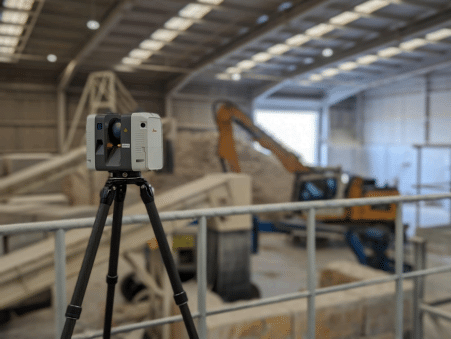Despite advancements in technology, construction remains a major source of emissions due to energy-intensive materials and processes. However, with rising climate concerns, the industry is undergoing a crucial shift towards eco-friendly practices.
Whether it’s relying on sustainable green concrete during building construction or relying on energy-efficient solutions, there are different ways to reduce your carbon footprint while meeting your business goals.
In addition to protecting the environment, these creative methods of sustainable construction offer long-term financial advantages.
Let’s explore innovative approaches to integrate sustainable construction as part of your business.
Table of Contents
1. Focusing on On-site Sustainability
In the construction industry, the quest for sustainable and environmentally friendly alternatives is endless. Fortunately, achieving your sustainable goals becomes easier when you rent welfare units for hire for on-site accommodation.
Offering essential features such as a canteen, comfortable seating, kitchenettes and office space all under one roof, these temporary setups can drastically reduce operation costs while helping you reach your sustainability goals.
For instance, modern welfare units are built with energy efficiency in mind, offering features such as LED lighting and energy-efficient heating and cooling.
Moreover, by hiring these units you reduce the need for permanent structures, especially for short-term projects. This increased mobility and reusability allows repeated usage of these units across different sites, thereby reducing waste from building and dismantling temporary facilities.
2. Relying On Advanced Energy-Efficiency Standards
Achieving stricter energy-efficiency standards is a cornerstone of sustainable construction. This involves incorporating features like improved insulation, energy-efficient windows and doors, and smart technology like automated building management systems.
These advancements reduce pollutants while also saving building owners and renters money over the long run by lowering electricity expenses. Using these cutting-edge standards can have a major influence on large-scale developments such as apartment complexes or business buildings.
3. Implementing Sustainable Energy Sources
Another innovative and unique strategy is to include renewable energy sources directly into building designs, such as geothermal energy, solar power, and wind turbines.
In this way, you have access to clean, emission-free energy that can also generate excess power to return to the grid. Developers may maximise the environmental advantages and reduce the carbon footprint of new buildings by optimising the location and efficiency of renewable energy solutions from the design phase onward.
4. Utilising Sustainable Materials
Using sustainable materials in the building is one of the easiest ways to cut down on your carbon emissions. Conventional construction materials, such as steel and concrete, have very large carbon emissions during manufacture.
Instead of relying on traditional materials, sustainable materials are a better way to integrate eco-friendly materials. For example, green concrete is a substitute that uses recycled resources to lower the amount of cement needed.
Cement is a major source of CO2 emissions, making green concrete the best choice. Alternatively, bamboo is a robust and sustainable construction material that grows swiftly and absorbs carbon at a rate faster than many other plants.
5. Improved Insulation
Reducing a building’s environmental impact is a two-pronged approach – improved insulation and smart design.
High-quality, eco-friendly insulation maintains the warmth during winters and the cool air during summers. This means less reliance on heating and cooling systems, leading to significant energy savings and a smaller carbon footprint.
Similarly, a passive solar building design entails careful orientation and structural modifications to capture solar energy for lighting, heating and cooling. This method reduces the dependency on external energy sources by making use of ambient circumstances to naturally maintain suitable home temperatures and lighting.
When combined, these methods reduce the ecological footprint of building activities over their whole lifespan, which not only maximises energy efficiency but also fosters a healthier environment.
6. Considering Better Building Technologies
The construction industry is undergoing a significant transformation driven by innovative building technologies. These advancements are not only improving efficiency and project management but also fostering a more sustainable approach to construction.
Building Information Modelling (BIM) is a crucial technology that enables improved planning and design through digital representation. By facilitating accurate modelling and the early inclusion of sustainable elements into the design process, BIM minimises waste and the need for rework.
Smart glass is another noteworthy breakthrough that modifies transparency according to ambient illumination. This adaption lowers the overall carbon footprint of buildings by ensuring appropriate interior illumination while also decreasing energy expenses for artificial lighting, heating and cooling.
To Sum It Up
The transition to sustainable building practices presents both an opportunity and a requirement from an environmental and financial standpoint.
By using these tactics, it is possible to lower our carbon footprint, especially when it comes to construction. This also paves the way for a more sustainable and clean future for the building industry.





